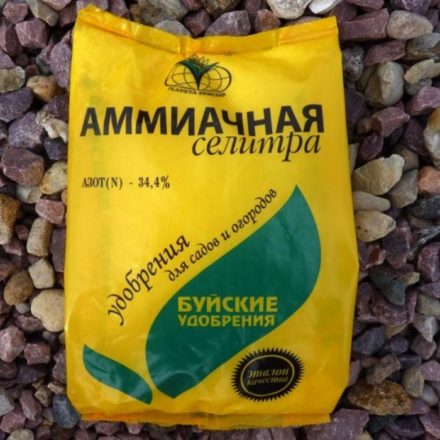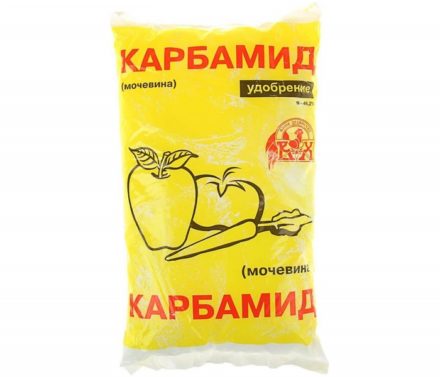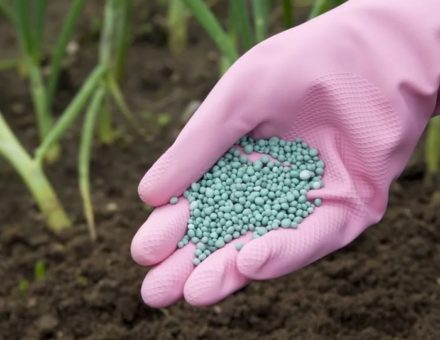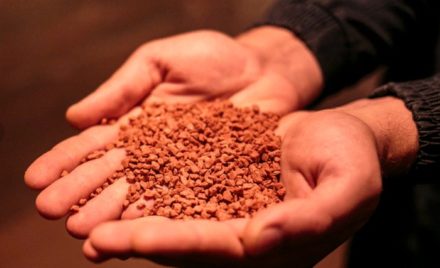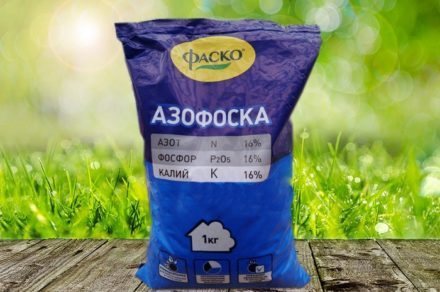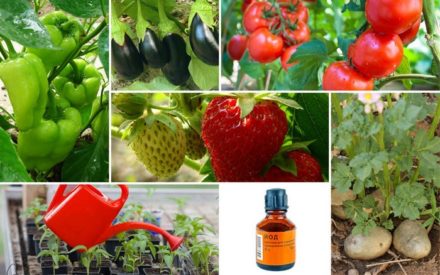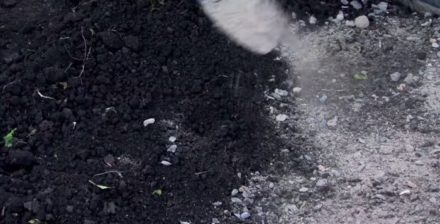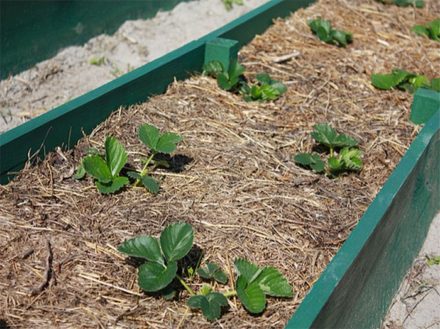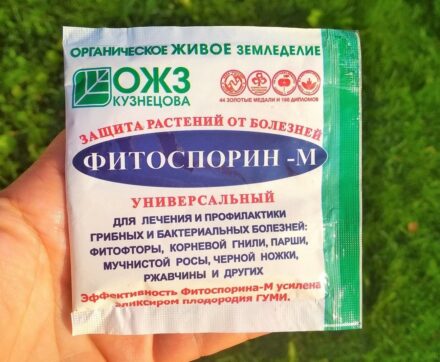To increase yield and protect plants from diseases, many gardeners use humates. They are easy to use and highly effective. Today, preparations based on humates are popular both in large enterprises and small farms.
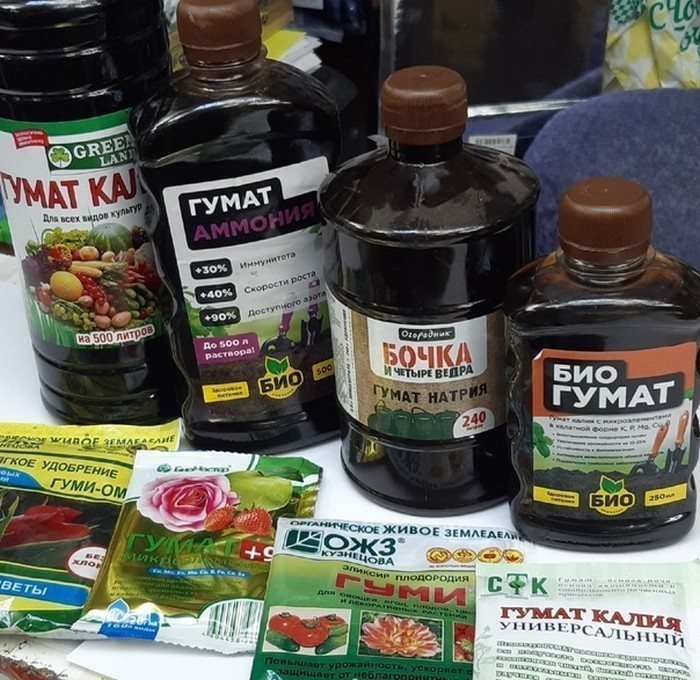
- What it is
- Compound
- How humates are obtained
- Release forms
- Kinds
- Potassium humate
- Sodium humate
- Ammonium humate
- Magnesium humate
- Complex fertilizers with humate
- Humate Iodine +7
- Gumat +9
- Beneficial properties for plants
- Difference between humic acids and humates
- Instructions for use
- Seed treatment
- Processing cuttings
- Plant nutrition
- Watering
- Foliar feeding
- Tillage
- Features of application for certain crops
- Green, bulbous and root vegetables
- Cucumbers and nightshades (tomatoes, eggplants)
- Any cabbage, carrots, vegetable (sweet) peppers, beets, pumpkin (zucchini, squash)
- Fruit and fruit crops
- Flowers
- Houseplants
- Compatibility of humates with other fertilizers
- With manure and compost
- With phosphorus
- With potassium
- With nitrogen
- Advantages and disadvantages of application
- Precautionary measures
- Storage rules and periods
What it is
Humates are easily soluble humic substances formed as a result of the decomposition of plant or animal residues. They are classified as salts based on sodium, potassium, magnesium, and ammonium.
Gardeners use preparations with humates for improvementincrease in soil fertility, as a growth stimulator. Deficiency of humic acids directly affects the condition of the soil. Deficiency of elements can lead to plant diseases. Have you used humates yet? Yes, I liked the result
Humates are environmentally friendly products. They include:
peptides;
- fulvic and hymatomelanic acids;
- polysaccharides;
- macro and microelements;
- amino acids;
- enzymes;
- proteins.
- In addition to the main elements, humic substances contain vitamins, mineral salts, hormones, fatty acids, etc.
How humates are obtained
Most humic substances that are found in nature are of no significant value for agriculture. For practical use, they are converted into a water-soluble form - humates. They are extracted using alkali from sapropel, some types of brown coal, and peat. The properties of humic substances obtained from different sources are slightly different. These differences determine the nature of their use.
Release forms
Humic substances are sold in various forms. Many gardeners prefer to use humates in the form of tablets. They are easy to dose for plant feeding. The preparations are also sold in liquid form. The concentrate is especially popular with gardeners growing crops on an industrial scale. In specialized stores, the compositions are sold in the form of dry granules, which are distinguished by an acceptable cost.
Types
Several types of humates are used for fertilization. The quality directly depends on the raw materials that were taken as a basis for production.Fertility solutions
soil, like
growth stimulator. The deficiency of humic acids directly affects the condition of the soil. A lack of elements can lead to plant diseases.
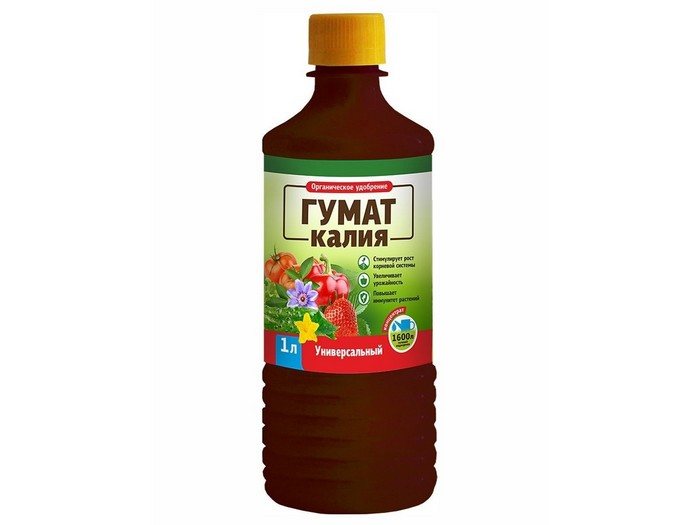
Have you already used humates?
Yes, but the result was not visible
No, I want to try

First time I heard about them, I’m trying to figure out whether to use them or not
Voted:
- Compound
- Humates are environmentally friendly preparations. They include:
- peptides;
- fulvic and hymatomelanic acids;
polysaccharides;
macro and microelements;
amino acids;
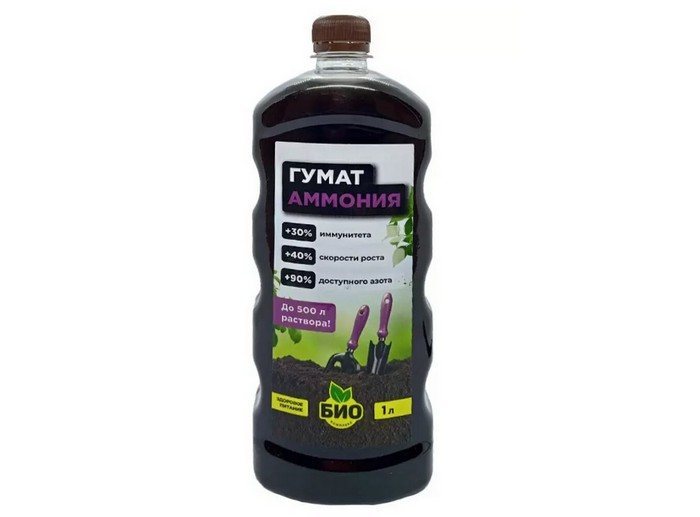
enzymes;
proteins.
In addition to the main elements, humic substances contain vitamins, mineral salts, hormones, fatty acids, etc.
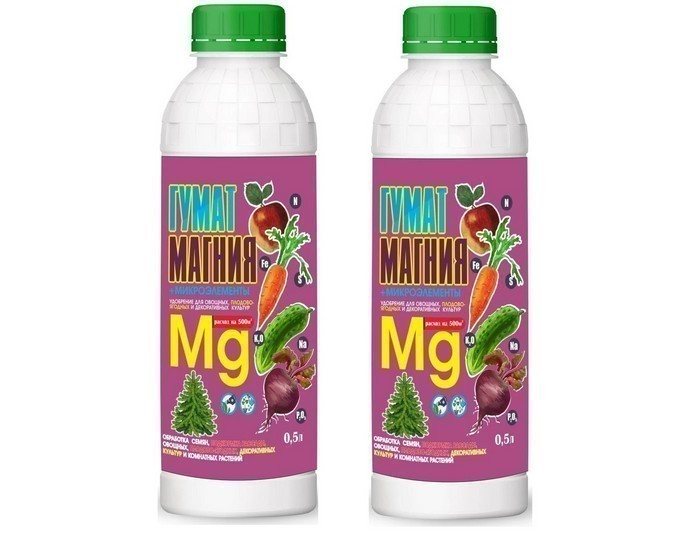
How humates are obtained
Most humic substances found in nature have no significant agricultural value. For practical use, they are converted into a water-soluble form - humates. They are extracted using alkali from sapropel, some types of brown coal, and peat. The properties of humic substances that are obtained from different sources are slightly different. These discrepancies determine the nature of their use.
Release forms
Humic substances are sold in various forms. Many gardeners prefer to use humates in tablet form. They are easy to dose for plant nutrition. The drugs are also sold in liquid form. The concentrate is especially popular among gardeners who grow crops on an industrial scale. In specialized stores, the compositions are sold in the form of dry granules, which have an acceptable cost.
Kinds
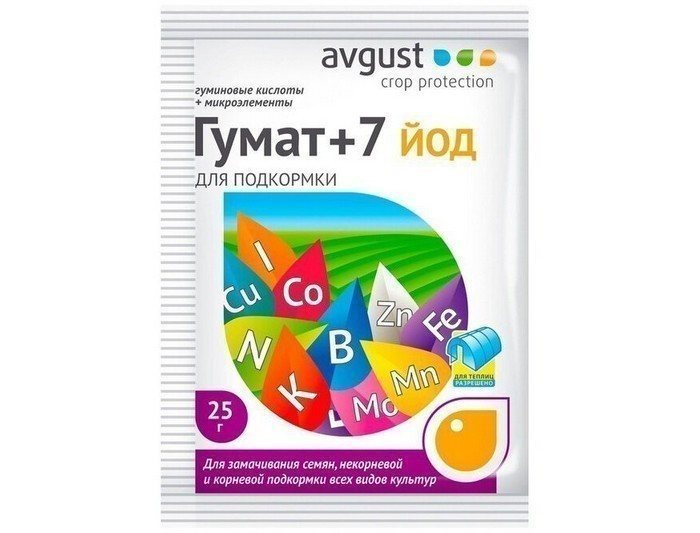
Several types of humates are used for fertilizer. The quality directly depends on the raw materials that were used as the basis for production.Potassium, sodium, ammonium and magnesium humate are isolated. All substances have a similar effect when used on a personal plot. But there are minor differences in properties and characteristics.
- Potassium humate
- The composition is characterized by a high potassium content. It is actively used for soaking tubers, bulbs and seeds before planting, and rooting cuttings. Experts recommend using potassium humate on soils with a high content of sodium compounds.
- 5 homemade fertilizers that will help you get strong seedlings of any color
- The substance is used as a growth accelerator for vegetables and fruit and berry plants. Can be used both in open ground and in greenhouses.
Sodium humate
- Initially used as a feed additive for broiler chickens. Sodium is an important mineral that is necessary for humans, animals, and birds. People get the substance from table salt. Sodium is added to animal feed.
- Has the following advantages:
- increases frost resistance of plants;
- absorbs salts of heavy metals, toxins and other harmful substances;
- promotes the growth of the root system;
- increases shoot growth.
- Sodium humate significantly increases the resistance of crops to adverse environmental factors: high or low temperatures, excessive humidity, dry weather.
The disadvantages of using sodium humate include incompatibility with clay soils that have a high pH.
Ammonium humate
It is distinguished by a large amount of nitrogen in its composition. Helps to quickly recover from stress: drying out, freezing, excessive soil moisture. Synthesizes carbohydrates, proteins and nucleic acids. Promotes active photosynthesis.
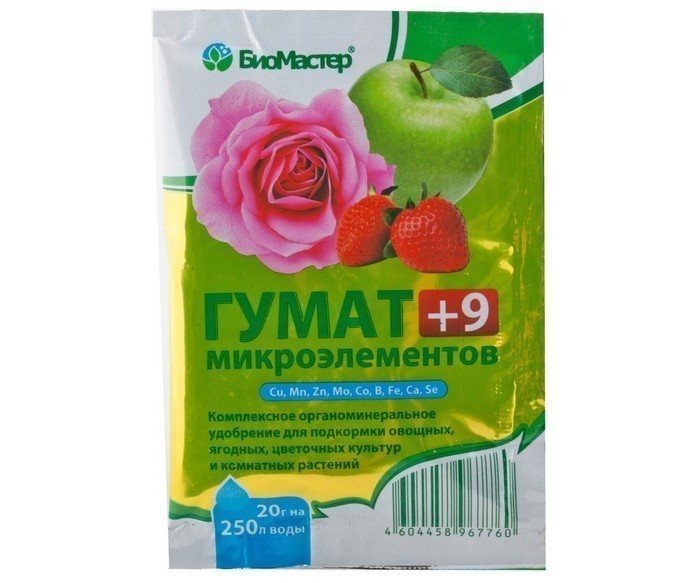
Ammonium humate is used together with all mineral fertilizers. The substance should not be used with phosphorus fertilizers and calcium nitrate. Insoluble compounds are formed that plants cannot absorb. Ammonium humate performs best on depleted alkaline soils.
Magnesium humate
Natural plant growth stimulator with high magnesium content. Promotes the active work of microorganisms in the soil. Forms resistance to many diseases, high temperatures, and excessive humidity. Helps plants quickly absorb nutrients.
- When using magnesium humate, a significant increase in yield is observed, and the number of ovaries increases. The substance is especially effective on cabbage, potatoes, ornamental coniferous shrubs, and trees.
- Complex fertilizers with humate
- The main advantage of humic fertilizers is the ability to restore soil fertility. Granular and powdery compositions are made from peat, while liquid ones are made from sapropel.
- Humate Iodine +7
- Organomineral fertilizer Humate Iodine +7 is used for:
pre-planting soaking of cuttings and rhizomes;
fertilizers for mature plants;
improving soil fertility.
The Gumat +7 fertilizer series includes several types of fertilizers. They are different in composition, functions and contain humic substances (80%) and seven microelements:
iron;
copper;
- zinc;
- boron;
- manganese;
- molybdenum;
cobalt.
Useful compounds in the fertilizer are present in the form of chelate compounds and are quickly absorbed by plants.
The composition of the drug Humate +7 iodine includes an additional element – iodine. It helps protect plants from diseases and pests.Regular processing of crops protects them from fungal infections.
Gumat +9
Complex organomineral fertilizer Humat +9 microelements is used for feeding plants at the roots and processing planting material. The drug promotes rapid and proper development of plants and increases productivity. The fertilizer contains humic substances, N-P-K complex and 9 microelements.
Beneficial properties for plants
Humates have a beneficial effect not only on the growth and development of plants, but also on the structure and composition of the soil. The main advantages of humic substances are:
significantly reduce the level of heavy metals and toxins in the soil;
enhance the effect of insecticides and herbicides;
contribute to the development of plant immunity to negative environmental factors;
normalize cellular metabolism;
Succinic acid for healthy and powerful seedlings: 4 useful tips for use
Humates do not harm the environment.
Difference between humic acids and humates
The main difference between humates and humic acids is that humates are salts of humic acids. They are obtained by mixing natural raw materials and alkali. Humates do not exist in soil.
Humic acids are important organic compounds present as a component of soil. They neutralize harmful chemicals and heavy metals in the soil. Reduce background radiation.
Instructions for use
To achieve the greatest effectiveness, it is important to know how to use humates correctly. They use preparations to fertilize plants, stimulate crop growth, strengthen the immunity of green spaces, and improve soil composition. Fertilizer is applied as follows:
soak the seeds in the solution before planting;
water the rooted seedlings;
feed adult plants for better fruiting and abundant flowering;
cuttings and roots of plants are processed.
Powdered humic substances are dissolved in water. For 10 liters of warm liquid (24-29 degrees) use 5 grams of fertilizer. Liquid fertilizer is taken in various concentrations. The main thing is to strictly follow the instructions for use. Under no circumstances should you increase the recommended dose on your own. This can negatively affect plants and soil composition.
The prepared solution is stored for no more than 7 days. The amount of fertilizing and the timing of application of drugs directly depend on the form of release and the type of crops cultivated.
Seed treatment
Humates are stimulants of seed germination. Helps increase the resistance of seedlings to negative environmental factors.
Seeds of vegetables and flowers, tubers and bulbs are soaked before sowing for up to three days. For potatoes, 12 hours are enough; tomato seeds are kept for 72 hours. The cabbage is soaked for two days. For many vegetable crops, 24 hours is enough. After processing in humates, the material is removed and slightly dried.
Processing cuttings
The cuttings are treated in a weak solution. To prepare it, use a third of a tablespoon of dry preparation and a liter of water. Scheme for using liquid humate: 7-9 ml of product per liter of water. Prepared cuttings are lowered to 2/3 of their length and kept in the composition for 14-16 hours.
Plant nutrition
Humates are used to feed plants using two methods: root and non-root. The first involves regular watering at the root. Foliar feeding occurs on the leaf.
Fertilizers are used during the growing season and fruiting. It is not recommended to use drugs on plants that do not bloom. The application of humates stops 3 weeks before harvest.
We populate the fungus to disinfect the soil: how to properly treat soil with Trichoderma
Watering
- To feed the roots, a tablespoon of dry humate is diluted in 10 liters of warm water. Plants are watered with the resulting mixture. When using liquid, 50-100 ml of the drug is mixed with 10 liters of water. After this, the desired crops are watered with the solution. Usage pattern: from 3 to 10 liters per square meter.
- Foliar feeding
- Fertilizing by spraying is carried out with a weak solution. Add a teaspoon of dry humate (3 grams) to 10 liters of warm water. The product is well absorbed through the green mass of cultivated crops. The prepared solution is sprayed onto the plants using a spray bottle.
- Foliar feeding of seedlings is carried out 2 times: in the phase of opening of the cotyledons and 10 days after the first application of fertilizers. During the entire growing season, humates are used from 2 to 6 times. It is better to fertilize leaf by leaf in the evening, when the temperature is below 28 degrees. At this time, the plant reduces stress from high daytime temperatures.
Tillage
Powdered formulations are used for this procedure. The main purpose of using humic substances is to improve soil structure and reduce the content of toxins and heavy metals. The dry product is mixed with sand and evenly scattered over the surface of the soil.After this, the soil is loosened for better penetration into the ground. To treat a square meter of soil, use 50 grams of powder.
The procedure is carried out twice a year: in the spring before the start of the planting season and in the fall after harvesting the grown crop. Beneficial substances introduced into the soil are gradually washed away during watering and under the influence of precipitation. The quality of the soil is deteriorating. If sodium and potassium humates are not added to the soil, a deficiency of iron and magnesium will occur.
Features of application for certain crops
In addition to observing the drug consumption standards and its dosage, it is important to know the intricacies of using the product. For each crop, the composition is used differently.
It is important to control the salt content in the water used to prepare the fertilizer. Humates do not work at high salinity levels. If humic substances precipitate during mixing, then such a solution will be of no use.
Green, bulbous and root vegetables
The composition is diluted according to the instructions. During the growing season, apply 3-5 times. All treatments are distributed evenly throughout the season. The bulbs are soaked for 12 hours. When watering, use 2-2.5 liters of composition per square meter. For spraying, use 1.5-2 liters.
The last treatment is recommended to be carried out no later than a week before harvest. It is better to purchase specialized formulations for greens and root vegetables.
Cucumbers and nightshades (tomatoes, eggplants)
It is necessary to start feeding nightshades and cucumbers already at the seedling stage. The plants are watered at the roots with a pre-prepared solution. It is better to do this shortly before planting the crops in a permanent place. After this, nightshades are fed once every 10 days.
When sowing cucumbers without seedlings, it is necessary to treat the seed material with humates. The first feeding is carried out when two true leaves appear.
Cucumbers grown in greenhouses are fertilized with potassium humate about 3 times per season. 50 ml of liquid preparation is diluted in 10 liters of water. The resulting composition is sprayed over the leaves and fed at the root.
Any cabbage, carrots, vegetable (sweet) peppers, beets, pumpkin (zucchini, squash)
Seed material can be soaked in a solution with humates for 24 hours. To prepare the composition, 3-4 grams of powder are dissolved in a liter of water. The seedlings are sprayed 3 times with a break of 14 days. Use the same solution as for processing cucumbers and nightshades.
Fruit and fruit crops
The roots of shrubs and trees are treated with solutions of humates. This procedure helps reduce stress in plants and ensures better survival. The composition is prepared according to the instructions.
After planting, green spaces are processed leaf by leaf at the following stages of the growing season:
At the stage of bud break.
During the budding period.
Upon completion of flowering.
When ovaries appear.
Treatment is carried out twice during the development of berries and fruits. All fertilizing must be stopped 14 days before harvest. After this, you can continue to apply fertilizer, but only at the root.
- To feed strawberries, experienced gardeners recommend choosing potassium humate. Fertilize the crop 4 times per season. It is better to spray the first leaves that appear, and during flowering and after harvesting it is recommended to water at the root.
- Flowers
- Preparations with humic substances are used to increase the duration of flowering and the formation of a large number of buds. The seedlings must be fed with a weak solution shortly before transplanting to a permanent location. Flowers in pots are fed before long transportation. This is done to reduce stress in plants.
- Before planting in a temporary shelter, cut rose cuttings are placed one-third in the solution for 12-14 hours. Tubers and flower bulbs are soaked in the composition. Processing period – from 3 to 10 days. The likelihood of rot occurring is significantly reduced. For watering at the root, use a tablespoon of dry product per 10 liters. 5 ml of liquid composition diluted in 10 liters of water is suitable for spraying on a leaf.
- For lush and strong seedlings of petunia, calibrachoa, and surfinia, you can feed them with a weak solution of potassium humate every 10 days. Plants become strong and do not stretch.
Houseplants
Humates are important preparations for indoor plants. In a confined space, humus is not produced. Fertilizing with humic substances stimulates plant growth and promotes the formation of a large number of buds.
Fertilizers are applied from March to September once every 7 days. In winter, treatment is carried out once every 35-45 days. For root feeding and spraying, the same composition is prepared: 50 ml of liquid preparation is diluted per liter of water.
For orchids, potassium and sodium humate are used throughout the growing season. The flower receives a sufficient amount of macro and microelements, and the quality of the soil improves.
Compatibility of humates with other fertilizers
Humates are used in combination with other fertilizers.Combination with nitrogen, potassium and organic compounds helps reduce the amount of mineral fertilizers used.
Azofoska in spring: features of fertilizer application


